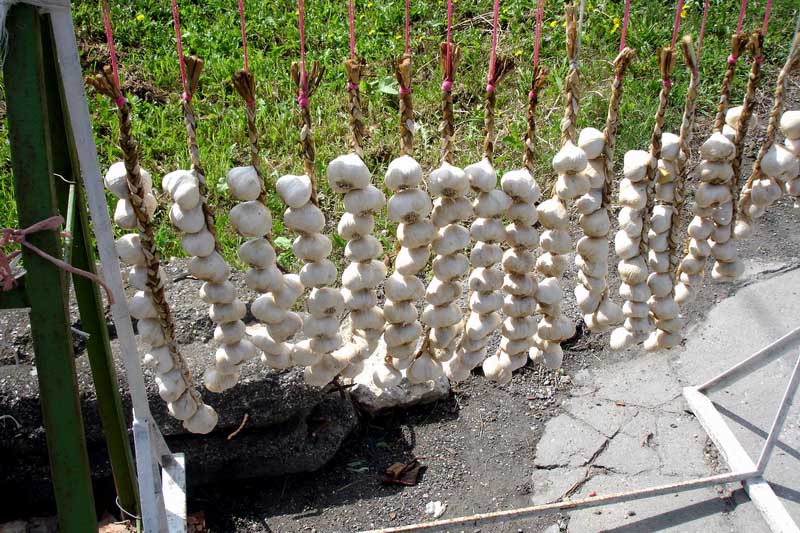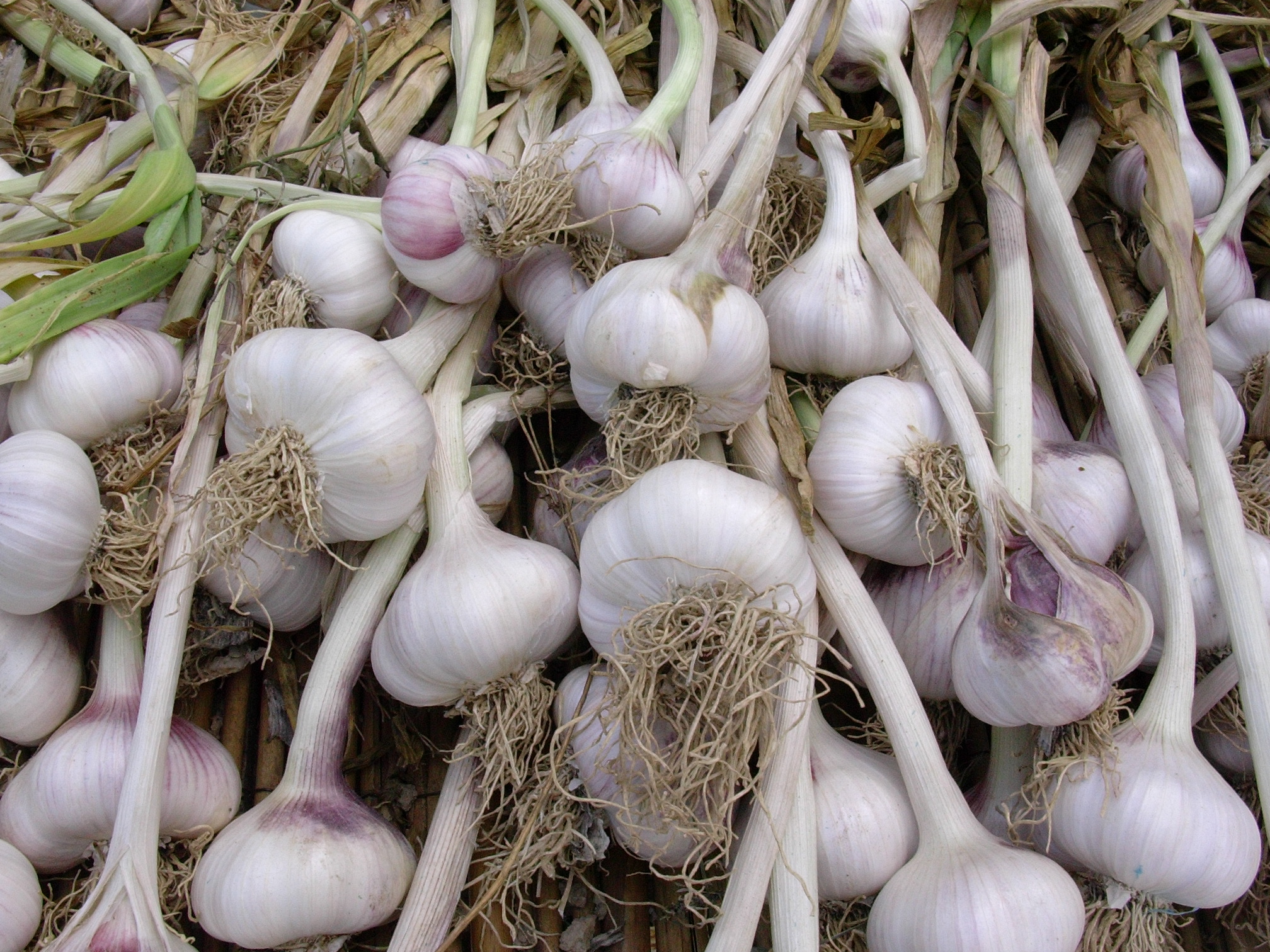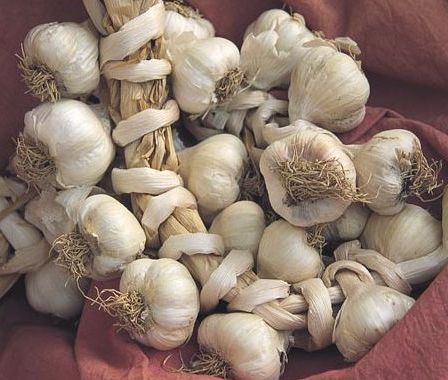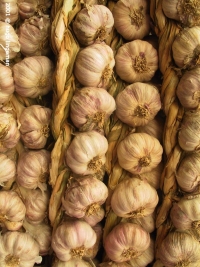
Vessalico Garlic
This post is also available in:
 Italiano (Italian)
Italiano (Italian)
This is a variety of garlic grown in the 11 municipalities of Upper Arroscia Valley. It has survived until today, thanks to many generations of stubborn farmers and their unique cultivation and packaging techniques.
It’s a herbaceous perennial bulb plant, made of many small clove bulbs with white or pinkish skin. The leaves are welded to the base and form a sheath on the flower stem; at the top, they look flat and hollow, while they can be up to 0.40 inch wide at the bottom.
Its name is linked to the Festival regularly held in the Municipality of Vessalico. There are many and controversial theories about the origin of garlic (allium sativum): one of the most popular identifies Central Asia, and in particular the Kyrgyz desert and India, as the only two countries in the world where this plant grows spontaneously.
Other theories mention Sicily. What’s undoubtedly certain is its popular use, especially as a drug, in ancient times all over the world.
The main features of this variety are the intense aroma and a delicate taste. It also proves easily digestible and has a good shelf life. The cultivation is completely manual and organic (for over two years now, the sun has been used to thoroughly disinfect the soil).
Ancient Egyptians used to consume large quantities of garlic, as well as the Greeks, despite the latter used to call it “fetid”. In Imperial Rome, it was widely used by farmers and soldiers, while in the Middle Ages physicians resorted to its antiseptic properties to cure fever, deafness, and the plague.
Today, Vessalico garlic is widely recognized as a popular ingredient in local recipes, and a vital one of the Mediterranean diet.
This post is also available in:
 Italiano (Italian)
Italiano (Italian)
Contatti
Vessalico(IM)





